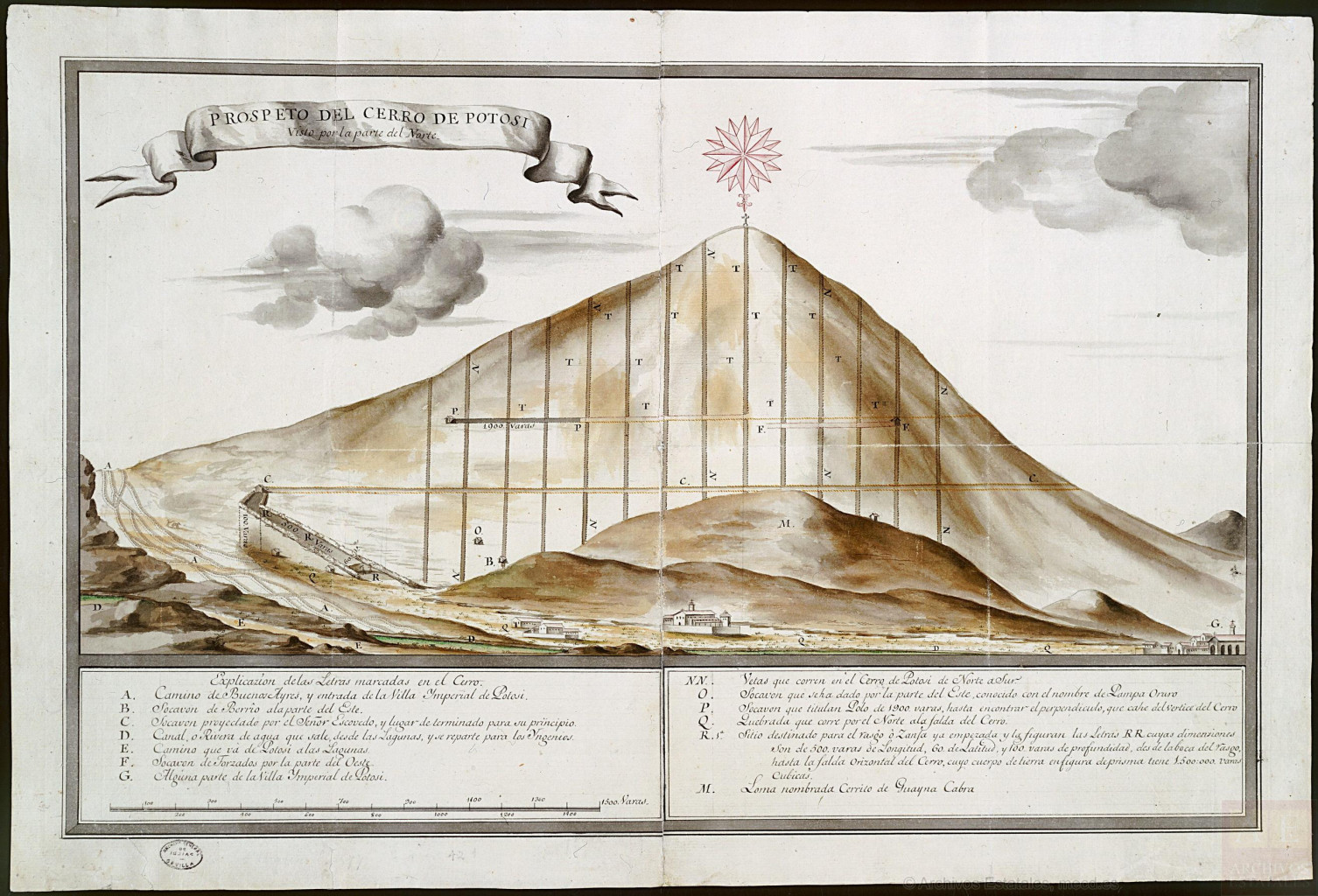With the enlightened Bourbon reforms of the 18th century, which included the halving of the severance tax from a fifth to a tenth, creation of a savings bank, and mit’a or corvee labour reform, the Cerro Rico began a slow and extended recovery. A new mint opened in 1773, outfitted with state-of-the-art equipment, and technical advice on mining and refining was sought all over Europe. Rationalisation of mining and refining entailed a new, less organic vision of the Cerro Rico, as revealed in this 1772 diagram purporting to ‘square the circles’ and get to the bottom of the mountain. The Bourbon reforms paid off, although at great human cost. Production soared into the 1790s as mit’a workers laboured much harder than in the past, their ore quotas set higher and higher, and the rate of mercury consumption in the refineries fouled more water and air than at any time since the late 16th century. New technologies and more punishing work regimes could not solve all problems, however, and as the Cerro Rico’s mines grew deeper, they grew ever more expensive to work, more prone to flooding, cave-ins and simply playing out.
The Cerro Rico of Bourbon Potosí
The Cerro Rico of Potosí, 1772, with modern Berrío adit at left (courtesy of the Archivo General de Indias, Spain).
1772
Kris Lane
Further reading
- Arzáns de Orsúa y Vela, B. (1965) Historia de la Villa Imperial de Potosí, 3 vols., edited by L. Hanke and G. Mendoza (Providence, RI: Brown University Press).
- Bakewell, P.J. (1985) Miners of the Red Mountain: Indian Labor in Potosí, 1545–1650 (Albuquerque, NM: University of New Mexico Press).
- Bakewell, P.J. (1987) Silver and Entrepreneurship in Seventeenth-Century Potosí: The Life and Times of Antonio López de Quiroga (Albuquerque, NM: University of New Mexico Press).
- Barragán Romano, R. (2019) Potosí global: viajando con sus primeras imágenes (1550–1650) (La Paz: Plural Editores).
- Bueuchler, R.M. (1981) The Mining Society of Potosí, 1776–1810 (Syracuse, NY: Syracuse University Press).
- Capoche, L. (1959) Relación general de la Villa Imperial de Potosí [1585]. BAE 122. Edited Hanke (Madrid: Atlas).
- Cole, J. (1985) The Potosí Mita, 1573–1700: Compulsory Indian Labor in the Andes (Stanford, CA: Stanford University Press).
- González Casasnovas, I. (2000) Las dudas de la corona: la política de repartimientos para la minería de Potosí (1680–1732) (Madrid: CSIC).
- Lane, K. (2019) Potosí: The Silver City That Changed the World (Oakland, CA: University of California Press).
- Mangan, J. (2005) Trading Roles: Gender, Ethnicity, and the Urban Economy in Colonial Potosí (Durham, NC: Duke University Press).
- Tandeter, E. (1993) Coercion and Market: Silver Mining in Colonial Potosí, 1692–1826 (Albuquerque, NM: University of New Mexico Press).





